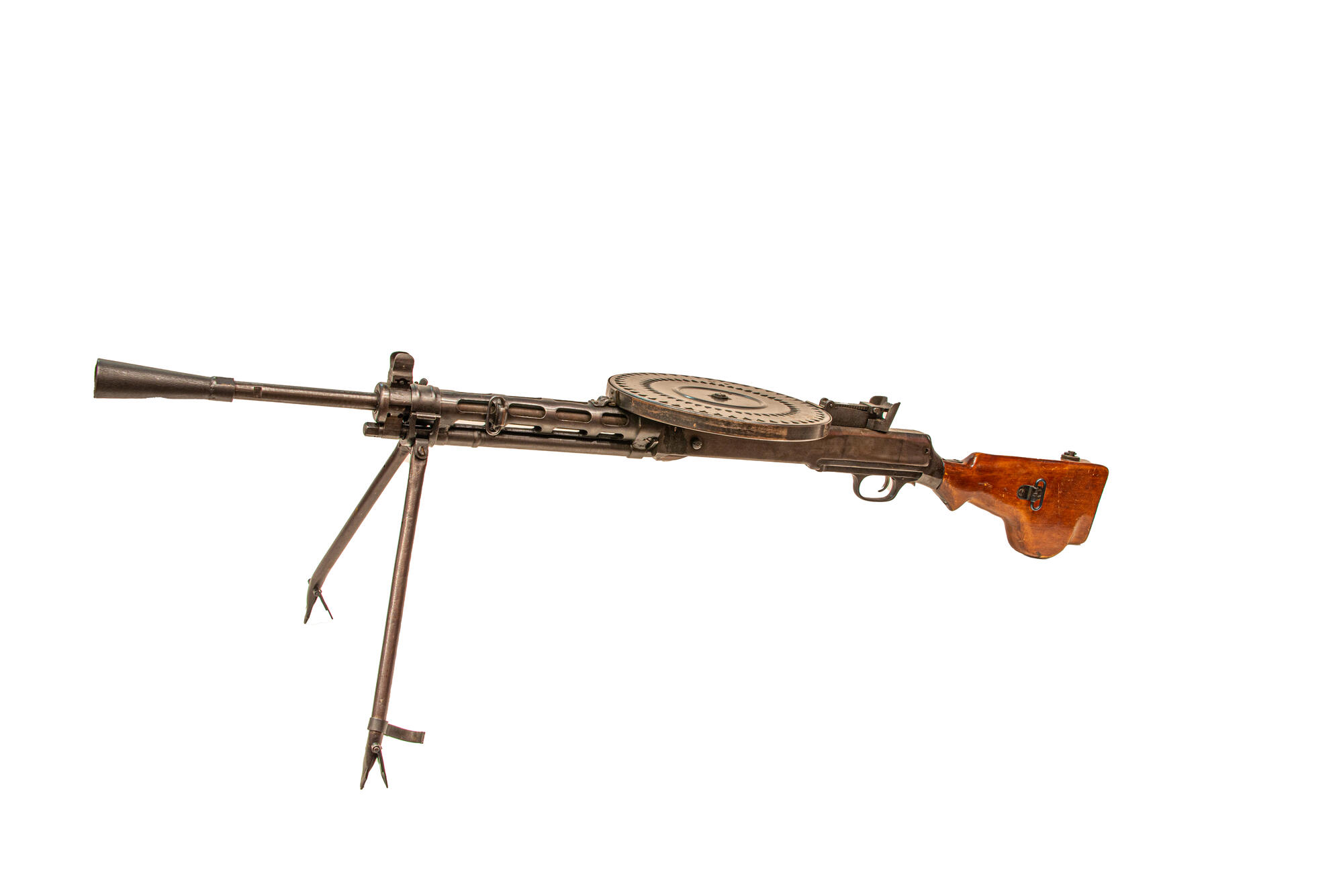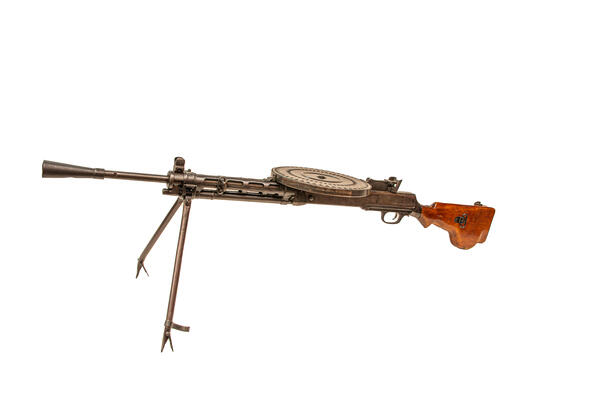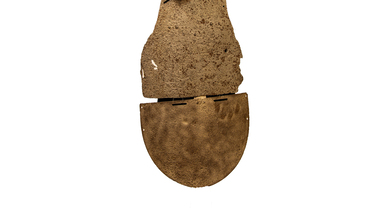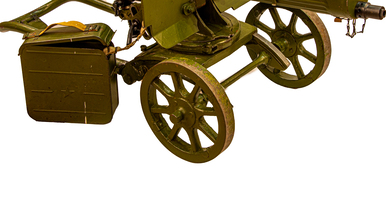Degtyaryov light machine gun (DP-27) was tested at the Kovrov plant on November 12, 1927. It was one of the first models of light machine-guns manufactured in the USSR. The machine gun became world-famous: it was rapid-firing, almost always jam-free in action, and easy to handle. Its true-to-size and weight model is housed in the museum’s collection.
During the First World War, the Soviet Army soldiers were in dire need of a light machine gun, which could be used in all battles for infantry fire support. The Chauchat and Lewis models had already outlived their usefulness at that time: their systems were outdated, and there were not enough spare parts for them to fix the broken ones.
The first ten Degtyaryov machine guns were manufactured at the Kovrov plant in 1927 — so they were called DP-27. Then a batch of 100 machine guns was made for military tests. On December 21, 1927, the Workers’ and Peasants’ Red Army adopted the weapon.
The samples of the DP-27, which were presented by Vasily Degtyaryov, were quickly approved by the leadership of the Red Army: the new weapon showed excellent results in a 30-degree frost. By the beginning of the Great Patriotic War, there were 170 400 Degtyaryov light machine guns used in the Red Army.
During the war, the DP-27 was improved: the machine gun had a more convenient pistol grip, the return spring was moved to the rear of the barrel receiver. The weapon became more durable and reliable.
The grip safety catch of the machine gun was replaced with a safety lever. Before that, during an intense battle, it was necessary to hold the button constantly with one’s hand, which was difficult for the soldiers. The safety lever could simply be switched to the desired position.
Machine guns of the 1927 and 1944 types remained in service with rifle regiments until the end of the 1940s. Gradually, they were replaced by a new Degtyaryov machine gun, RP-46. Its key difference from the previous model was the attached ammunition belt.
The Degtyaryov machine gun became the most used machine gun of the Soviet Armed Forces during the war years. The company machine gun RP-46 was noted for its manufacturing simplicity: it needed two times less measurements and parts than a revolver, and three times less than a rifle. The Maxim machine gun required four times the number of technological operations than the RP-46. The DP machine gun quickly gained popularity, as it successfully combined the fire power and maneuverability.
During the First World War, the Soviet Army soldiers were in dire need of a light machine gun, which could be used in all battles for infantry fire support. The Chauchat and Lewis models had already outlived their usefulness at that time: their systems were outdated, and there were not enough spare parts for them to fix the broken ones.
The first ten Degtyaryov machine guns were manufactured at the Kovrov plant in 1927 — so they were called DP-27. Then a batch of 100 machine guns was made for military tests. On December 21, 1927, the Workers’ and Peasants’ Red Army adopted the weapon.
The samples of the DP-27, which were presented by Vasily Degtyaryov, were quickly approved by the leadership of the Red Army: the new weapon showed excellent results in a 30-degree frost. By the beginning of the Great Patriotic War, there were 170 400 Degtyaryov light machine guns used in the Red Army.
During the war, the DP-27 was improved: the machine gun had a more convenient pistol grip, the return spring was moved to the rear of the barrel receiver. The weapon became more durable and reliable.
The grip safety catch of the machine gun was replaced with a safety lever. Before that, during an intense battle, it was necessary to hold the button constantly with one’s hand, which was difficult for the soldiers. The safety lever could simply be switched to the desired position.
Machine guns of the 1927 and 1944 types remained in service with rifle regiments until the end of the 1940s. Gradually, they were replaced by a new Degtyaryov machine gun, RP-46. Its key difference from the previous model was the attached ammunition belt.
The Degtyaryov machine gun became the most used machine gun of the Soviet Armed Forces during the war years. The company machine gun RP-46 was noted for its manufacturing simplicity: it needed two times less measurements and parts than a revolver, and three times less than a rifle. The Maxim machine gun required four times the number of technological operations than the RP-46. The DP machine gun quickly gained popularity, as it successfully combined the fire power and maneuverability.



